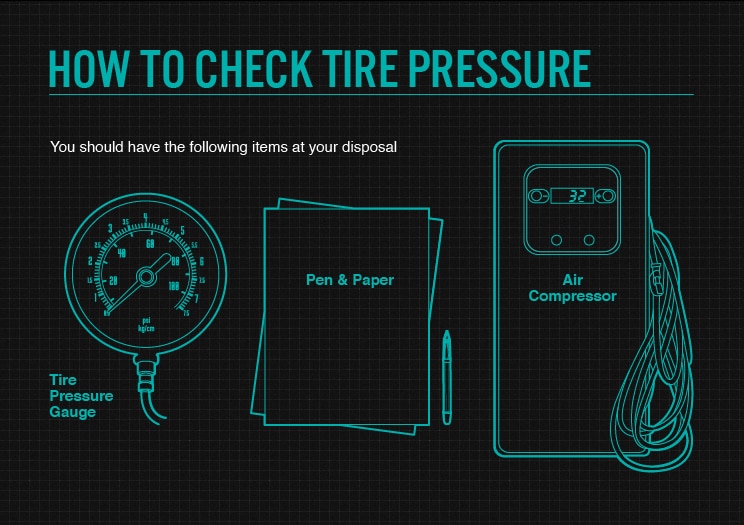How to Check Tire Pressure Gauge for Accuracy
To check the accuracy of a tire pressure gauge, use a master gauge from a trusted source. Having the correct tire pressure is crucial for optimal performance and safety while driving.
To ensure that your tire pressure gauge is accurate, you can use a master gauge. Simply compare the readings from your tire pressure gauge with the readings from the master gauge. If there are any discrepancies, you will know that your tire pressure gauge may need to be recalibrated or replaced.
Regularly checking the accuracy of your tire pressure gauge is important for maintaining the correct tire pressure and avoiding any potential issues while on the road.

Credit: www.amazon.com
Choosing The Right Tire Pressure Gauge
When it comes to ensuring proper maintenance of your vehicle, choosing the right tire pressure gauge is essential. Let’s dive into the key points to consider when selecting a tire pressure gauge that suits your needs.
Analog Vs. Digital
Analog gauges are simple and durable, while digital gauges provide precise readings for modern vehicles.
Accuracy Ratings
Look for gauges with high accuracy ratings to ensure reliable tire pressure readings.

Credit: www.bridgestonetire.com
Calibrating Your Tire Pressure Gauge
Make sure your tire pressure gauge is accurate by calibrating it regularly. Use a known accurate gauge to compare readings and adjust as needed for precise tire pressure measurements. Regular calibration ensures your gauge is providing accurate readings for safe driving.
Understanding Calibration
In order to accurately check your tire pressure, it is crucial to understand the concept of calibration. Calibration refers to the process of adjusting your tire pressure gauge to ensure its accuracy. Over time, tire pressure gauges can become less precise due to regular use or exposure to extreme temperatures. Therefore, periodic calibration is necessary to maintain the reliability of your gauge.
Step-by-step Calibration Process
Calibrating your tire pressure gauge may seem daunting, but it is a simple process that you can easily perform at home. By following these step-by-step instructions, you can ensure that your tire pressure gauge provides accurate readings every time.
Step 1: Gather The Necessary Tools
To calibrate your tire pressure gauge, you will need a few common items:
- Tire pressure gauge
- Tire pressure source (e.g., an air compressor)
- Calibration tool (optional, but highly recommended)
Step 2: Verify The Accuracy Of Your Gauge
Before beginning the calibration process, you should verify the accuracy of your tire pressure gauge. This can be done by comparing its readings to a known accurate gauge. If the readings significantly differ, calibration is required.
Step 3: Identify The Calibration Adjustment
Every tire pressure gauge has a calibration adjustment screw or button. This feature allows you to make minute adjustments to the gauge’s internal mechanism.
Step 4: Prepare The Gauge For Calibration
Before calibrating your tire pressure gauge, it is essential to ensure that it is at room temperature. Extreme temperatures can affect the accuracy of the gauge, so allow it to acclimate if necessary.
Step 5: Calibrate The Gauge
Now it’s time to calibrate your tire pressure gauge:
- Ensure that the tire pressure gauge is at zero before starting.
- Insert the calibration adjustment tool into the screw or button.
- Gently turn the tool clockwise to increase the pressure reading or counterclockwise to decrease it.
- Make small adjustments until the gauge aligns accurately with the known accurate gauge.
- Remove the calibration adjustment tool and recheck the gauge to ensure its accuracy.
Your tire pressure gauge is now calibrated and ready for use.
Checking Accuracy Of Your Tire Pressure Gauge
To ensure the accuracy of your tire pressure gauge, conduct a simple test using a calibrated gauge. Compare the readings to verify your gauge’s precision and make adjustments as needed for optimal tire inflation. Regular calibration helps maintain tire pressure and improves overall vehicle performance.
Tire pressure is crucial for the performance and longevity of your vehicle’s tires. To ensure accurate readings, it’s important to regularly check the accuracy of your tire pressure gauge. In this section, we will explore two methods to verify the precision of your gauge: comparison with known accuracy and testing different pressure levels.
Comparison With Known Accuracy
Comparing your tire pressure gauge against a known accurate gauge is a simple yet effective way to determine its reliability. Here’s how you can do it:
- Identify a trusted, calibrated gauge that you can use as a reference.
- Place the reference gauge’s nozzle onto the valve stem of a tire and make a note of the pressure reading.
- Remove the reference gauge and attach your gauge to the same valve stem.
- Take note of the pressure reading displayed by your gauge and compare it to the reading from the reference gauge.
- If the readings differ, calculate the variance to determine the accuracy of your gauge.
Note: To ensure the highest level of accuracy, it is recommended to use a reference gauge that has been recently calibrated. This will provide the most reliable results for comparison.
Testing Different Pressure Levels
Another way to check the accuracy of a tire pressure gauge is to test it at various pressure levels. By doing so, you can assess its performance across different ranges. Here’s how to test your gauge:
- Obtain a trusted, calibrated gauge for comparison.
- Select a tire and deflate it to a low pressure level, ideally around 10-15 psi.
- Attach both your gauge and the reference gauge to the valve stem of the deflated tire.
- Take note of the readings from both gauges and compare them.
- Repeat the process at higher pressure levels, such as 30-35 psi and 40-45 psi.
- Compare the readings at each pressure level to identify any discrepancies.
By testing your gauge at different pressure levels, you can gain a better understanding of its overall accuracy and performance across various tire conditions.
Factors Affecting Accuracy
Factors affecting the accuracy of tire pressure gauges should be taken into consideration when checking for accuracy. It is important to regularly inspect and calibrate the gauge to ensure precise readings, as variables like temperature, age, and calibration can impact accuracy.
Temperature
Changes in temp can lead to inaccurate readings on tire pressure gauges. Mechanical WearMechanical Wear
Over time, tire pressure gauges can experience mechanical wear. When a pressure gauge wears out, it may no longer provide precise measurements. Ultimately, understanding these factors is crucial for accurate tire pressure readings.Maintenance And Care For Accuracy
Proper maintenance and care are essential for ensuring the accuracy of your tire pressure gauge. Regular calibration is vital to guarantee that your gauge is providing correct readings. It’s recommended to calibrate your gauge at least every six months, or more frequently if you utilize it on a daily basis. This will help to identify any potential inaccuracies and ensure that your gauge continues to function effectively.
Proper storage of your tire pressure gauge is crucial for maintaining its accuracy. Storing your gauge in a dry and controlled environment, away from extreme temperatures and moisture, can help to prevent any damage or changes in calibration. Additionally, keeping the gauge in its protective case when not in use can protect it from any potential damage or impacts that could affect its accuracy.

Credit: www.motor1.com
Frequently Asked Questions For How To Check Tire Pressure Gauge For Accuracy
How Can Pressure Gauges Be Checked For Accuracy?
To check pressure gauge accuracy: 1. Compare readings with a known accurate pressure reference. 2. Ensure the gauge is properly calibrated and zeroed before testing. 3. Check for any damages or wear that may affect accuracy. 4. Verify that the gauge is within its specified measurement range.
5. Consider getting the gauge professionally tested and calibrated if doubt persists.
How Do I Make Sure My Tire Pressure Is Correct?
To ensure correct tire pressure, use a tire gauge to measure pressure when tires are cool. Check recommended PSI in the manual or on a sticker inside the driver’s door. Inflate or deflate as needed and recheck pressure regularly to maintain optimal performance and safety.
What Is The Most Accurate Way To Measure Tire Pressure?
The most accurate way to measure tire pressure is using a digital tire pressure gauge. Simply place the gauge onto the tire’s valve stem and press firmly to obtain a reading. This method provides precise and reliable results for maintaining optimal tire pressure.
How Do You Calibrate A Tire Gauge?
To calibrate a tire gauge, press and hold the pressure relief valve to reset it to zero. Then, inflate the tire to a known pressure using a reliable pressure source. Compare the tire gauge reading to the known pressure and adjust the gauge as needed.
Conclusion
Ensuring your tire pressure gauge’s accuracy is crucial for safe driving. Regular maintenance check-ups can help you avoid potential issues on the road. By following these simple steps, you can confidently assess and adjust your tire pressure with ease. Stay proactive and stay safe on the road!


